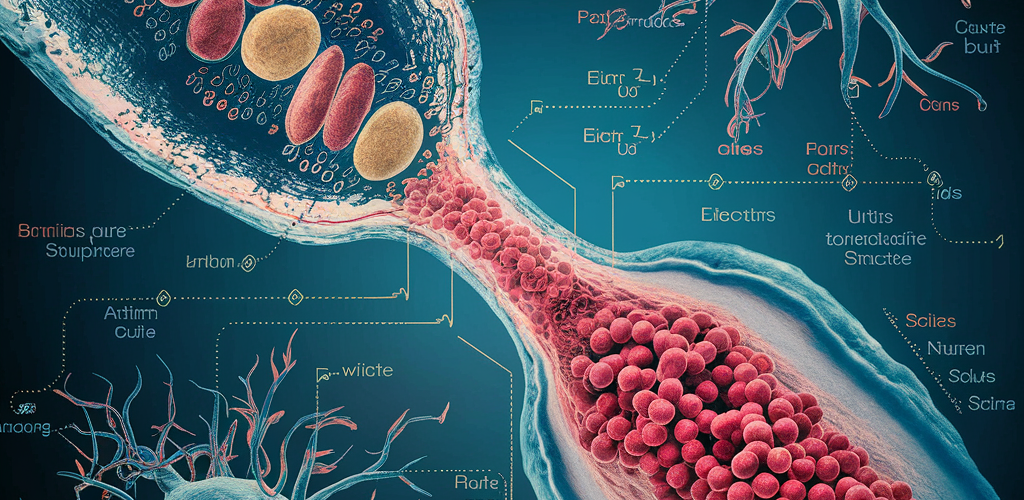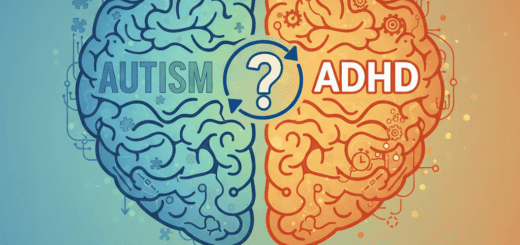Unveiling the Link Between Umbilical Cord Blood Fatty Acids and Autism Spectrum Disorder

Introduction
Autism Spectrum Disorder (ASD) is a complex neurodevelopmental condition characterized by challenges in social interaction, communication, and repetitive behaviors. Despite increased awareness and research, the exact causes of ASD remain elusive. However, a groundbreaking study from the University of Fukui, published in Psychiatry and Clinical Neurosciences, has shed new light on the potential role of fatty acids in umbilical cord blood in developing ASD.
The Study: Investigating Fatty Acids and ASD
Researchers from the University of Fukui, including Professor Hideo Matsuzaki, Dr. Takaharu Hirai, and Dr. Naoko Umeda, aimed to explore the link between polyunsaturated fatty acids (PUFA) metabolites in umbilical cord blood and ASD symptoms. The study focused on the cytochrome P450 (CYP) pathway, which metabolizes PUFAs into compounds with either anti-inflammatory (epoxy fatty acids, EpFAs) or inflammatory (dihydroxy fatty acids, diols) properties.
Key Findings
The research team analyzed CYP-PUFA levels in neonatal umbilical cord blood samples from 200 children. These samples were collected at birth and preserved for later analysis. When the children reached six years old, their ASD symptoms and adaptive functioning were assessed.
Significant Metabolites Identified
The study identified a specific dihydroxy fatty acid, 11,12-dihydroxyeicosatrienoic acid (diHETrE), derived from arachidonic acid, as significantly impacting ASD severity. Key findings include:
- Higher Levels of 11,12-diHETrE: Associated with impaired social interactions.
- Lower Levels of 8,9-diHETrE: Linked to increased repetitive and restrictive behaviors.
- Gender Differences: The correlation between diHETrE levels and ASD symptoms was more pronounced in girls than in boys.
Implications for Early Diagnosis and Intervention
These findings suggest that measuring diHETrE levels in umbilical cord blood at birth could potentially predict the likelihood of ASD development. Early detection is crucial, as it allows for timely intervention, which is known to improve outcomes for children with ASD significantly.
Future Directions
The study opens new avenues for understanding and potentially preventing ASD. Prof. Matsuzaki highlights the possibility of inhibiting diHETrE metabolism during pregnancy as a preventive measure, although further research is needed to explore this potential treatment.
Conclusion
The discovery of the link between umbilical cord blood fatty acids and ASD symptoms marks a significant step forward in autism research. By enhancing our understanding of ASD’s developmental trajectory, these findings could lead to improved diagnostic techniques and early interventions, ultimately benefiting individuals with ASD and their families. For more detailed information, please refer to the original study published in Psychiatry and Clinical Neurosciences.
References:
- University of Fukui. “Fatty acids in umbilical cord blood might cause autism spectrum disorder, study suggests.” ScienceDaily. July 29, 2024. Retrieved July 30, 2024.
FAQ
How can measuring diHETrE levels at birth improve early intervention for ASD
Measuring diHETrE levels in umbilical cord blood at birth could potentially improve early intervention for Autism Spectrum Disorder (ASD) in several important ways:
- Earlier detection: The study found a significant link between diHETrE levels at birth and subsequent ASD symptoms. This allows for potential identification of ASD risk much earlier than current diagnostic methods, which typically occur around 2-3 years of age or later.
- Objective biomarker: diHETrE levels provide an objective, physiological measure that could complement existing behavioral assessments. This may lead to more accurate and earlier diagnoses.
- Targeted interventions: By identifying children at higher risk for ASD at birth, interventions can be initiated much earlier in development. Early intervention is well-established as being highly effective for children with ASD.
- Personalized approach: The study found that higher levels of 11,12-diHETrE were associated with impaired social interactions, while lower levels of 8,9-diHETrE were linked to repetitive and restrictive behaviors. This information could help tailor early interventions to address specific symptom domains that a child may be at higher risk for developing.
- Improved outcomes: Earlier identification and intervention could significantly improve long-term outcomes for children with ASD. Professor Matsuzaki notes, “The effectiveness of early intervention for children with ASD is well established and detecting it at birth could enhance intervention and support for children with ASD”.
- Research opportunities: Measuring diHETrE levels at birth could also provide valuable data for further research into the developmental trajectory of ASD and potential preventive measures.
- Gender-specific approaches: The study found that the correlation between diHETrE levels and ASD symptoms was more pronounced in girls than in boys. This insight could lead to more gender-specific early intervention strategies.
It’s important to note that while these findings are promising, more research is needed to validate diHETrE as a predictive biomarker for ASD fully and to develop specific intervention protocols based on these measurements. Additionally, ethical considerations regarding early testing and potential stigmatization must be carefully addressed before widespread implementation.
What are the potential benefits of inhibiting diHETrE metabolism during pregnancy
Inhibiting diHETrE metabolism during pregnancy could offer several potential benefits in preventing Autism Spectrum Disorder (ASD) traits in children. Here are the key advantages based on recent research findings:
1. Reduction of Inflammatory Effects
- Inflammatory Properties: diHETrE, a dihydroxy fatty acid derived from arachidonic acid, has inflammatory properties. High levels of diHETrE in umbilical cord blood have been linked to increased ASD symptoms in children.
- Balancing Inflammatory and Anti-Inflammatory Compounds: Inhibiting diHETrE metabolism could help balance the levels of inflammatory diols and anti-inflammatory epoxy fatty acids (EpFAs), potentially reducing neuroinflammation, which is a major factor in ASD development.
2. Improved Social Interactions
- Impact on Social Behavior: Higher levels of 11,12-diHETrE have been associated with impaired social interactions in children. By inhibiting its metabolism, it may be possible to mitigate these adverse effects, leading to better social functioning.
3. Reduction in Repetitive and Restrictive Behaviors
- Behavioral Impact: Lower levels of 8,9-diHETrE have been linked to increased repetitive and restrictive behaviors. Modulating the metabolism of diHETrE could help in reducing these behaviors, which are core symptoms of ASD.
4. Gender-Specific Benefits
- Pronounced Effects in Girls: The correlation between diHETrE levels and ASD symptoms was found to be more specific for girls than for boys. Inhibiting diHETrE metabolism could, therefore, have particularly significant benefits for preventing ASD traits in female children.
5. Early Intervention and Prevention
- Preventive Strategy: By targeting diHETrE metabolism during pregnancy, it may be possible to intervene before ASD symptoms fully develop. This proactive approach could lead to better developmental outcomes and reduce the overall prevalence of ASD.
6. Enhanced Understanding of ASD Etiology
- Research Implications: Inhibiting diHETrE metabolism could provide valuable insights into the biological mechanisms underlying ASD, contributing to the broader understanding of the disorder and potentially leading to new therapeutic targets.
Conclusion
While the potential benefits of inhibiting diHETrE metabolism during pregnancy are promising, further research is needed to understand its efficacy and safety fully. These findings open new avenues for preventing ASD traits and improving early intervention strategies, ultimately enhancing the quality of life for children at risk of developing ASD.References:
- EurekAlert! – Fatty acids in umbilical cord blood might cause autism spectrum disorder.
- ScienceDaily – Fatty acids in umbilical cord blood might cause autism spectrum disorder.
- Yahoo News – Scientists say Autism could be linked to fatty acids in the umbilical cord.
How do diHETrE levels specifically impact social interactions in children with ASD
High levels of 11,12-dihydroxyeicosatrienoic acid (diHETrE) in umbilical cord blood have been found to significantly impact social interactions in children with Autism Spectrum Disorder (ASD). Here are the key ways in which diHETrE levels specifically affect social behavior:
Impact on Social Affect
- Social Impairment: Elevated levels of 11,12-diHETrE are associated with greater impairment in social interactions, as measured by standardized diagnostic tools like the Autism Diagnostic Observation Schedule (ADOS-2) and the Vineland Adaptive Behavior Scales (VABS-II). This suggests that children with higher levels of this metabolite may struggle more with forming and maintaining social relationships.
- Severity of Symptoms: The study found a significant correlation between high 11,12-diHETrE levels and increased severity of social affect symptoms in children with ASD (P = 0.002). This means that the higher the levels of this fatty acid, the more pronounced the social deficits.
Mechanisms of Action
- Neuroinflammation: 11,12-diHETrE is derived from arachidonic acid and has inflammatory properties. Neuroinflammation is a known factor in the development of ASD, and higher levels of inflammatory compounds like diHETrE may exacerbate social impairments by affecting brain development and function.
- Gender Differences: The impact of 11,12-diHETrE on social interactions was found to be more specific in girls than in boys. This indicates that the metabolite may interact with gender-specific neurodevelopmental pathways, leading to more pronounced social challenges in female children with ASD.
Clinical Implications
- Early Identification: Measuring 11,12-diHETrE levels at birth could serve as an early biomarker for predicting social impairments in children at risk for ASD. This would allow for earlier and more targeted interventions, potentially mitigating the severity of social deficits.
- Tailored Interventions: Understanding the role of diHETrE in social impairments can lead to more personalized treatment plans that focus on reducing inflammation and supporting social skill development from a young age.
Conclusion
The findings highlight the crucial role of 11,12-diHETrE in influencing social interactions in children with ASD. By identifying and potentially modulating this metabolite during pregnancy or early infancy, it may be possible to improve social outcomes and overall quality of life for children with ASD.References:
- PubMed – Arachidonic acid-derived dihydroxy fatty acids in neonatal cord blood: High levels of 11,12-diHETrE impact social affect in ASD symptoms.
- Fox59 – Researchers say discovery points to possible autism cause in children.
- Inside Precision Medicine – Fatty acids in umbilical cord blood may predict autism severity.
- ResearchGate – Arachidonic acid-derived dihydroxy fatty acids in neonatal cord blood relate symptoms of autism spectrum disorders and social adaptive functioning.
- Wiley Online Library – Arachidonic acid-derived dihydroxy fatty acids in neonatal cord blood.
- Newsweek – Scientists may have discovered the cause of autism.
Why might the findings be more significant for girls than boys
The findings that diHETrE levels in umbilical cord blood might have a more significant impact on girls than boys in relation to Autism Spectrum Disorder (ASD) symptoms could be influenced by several factors:
1. Gender Differences in Brain Development
- Neurodevelopmental Differences: Research indicates that there are inherent differences in the neurodevelopment of boys and girls. These differences might make girls more susceptible to the effects of certain biochemical factors, such as diHETrE, during critical periods of brain development.
2. Hormonal Influences
- Hormonal Variations: The hormonal environment in utero can differ significantly between male and female fetuses. These hormonal differences might interact with diHETrE levels, leading to varying impacts on brain development and subsequent social behaviors.
3. Genetic and Epigenetic Factors
- Genetic Susceptibility: Girls and boys might have different genetic susceptibilities to the metabolites of fatty acids. Epigenetic modifications, which can be influenced by environmental factors, might also play a role in how diHETrE affects neurodevelopment differently in girls compared to boys.
4. Social and Behavioral Expectations
- Socialization Patterns: Girls and boys are often socialized differently from a young age, which can influence how they manifest and cope with ASD symptoms. Girls might be more adept at masking or compensating for social deficits, making the biochemical markers more critical for early identification.
5. Differential Diagnosis and Reporting
- Diagnostic Criteria: The criteria for diagnosing ASD have historically been based on male presentations of the disorder. This could mean that subtle differences in social interactions and behaviors influenced by diHETrE levels are more easily recognized and reported in girls when they do occur.
6. Research Bias and Focus
- Study Focus: Many studies have focused more on boys due to the higher prevalence of ASD in males. As research begins to focus more on girls, differences such as the impact of diHETrE levels are becoming more apparent, highlighting the need for gender-specific research in ASD.
Conclusion
The more significant impact of diHETrE levels on girls with ASD underscores the importance of considering gender differences in both research and clinical practice. Understanding these differences can lead to more tailored and effective interventions for ASD, benefiting both boys and girls.
References:
- ScienceDaily – Fatty acids in umbilical cord blood might cause autism spectrum disorder.
- The Atlantic – Why Girls Tend to Get Better Grades Than Boys Do.
- NBC News – Girls get better grades than boys, even in STEM subjects, study finds.
What role do polyunsaturated fatty acids (PUFA) play in ASD development
Based on the search results, polyunsaturated fatty acids (PUFAs) appear to play a complex role in autism spectrum disorder (ASD) development, with some key points emerging:
- Potential protective effects:
- Some studies suggest maternal intake of omega-3 PUFAs during pregnancy may have protective effects against ASD in offspring. For example, one study found mothers consuming more total omega-3 in the second half of pregnancy were 40% less likely to have children with ASD.
- Impact on neurodevelopment:
- PUFAs, especially omega-3 fatty acids like DHA, play important roles in brain development, cognitive function, and neurotransmission. Imbalances or deficiencies in PUFAs during critical developmental periods may impact neurological development.
- Inflammation and immune function:
- PUFAs, particularly omega-3s, have anti-inflammatory properties and help regulate immune function. Low levels of omega-3 relative to omega-6 may increase inflammatory cytokines and oxidative stress, which has been associated with ASD symptoms.
- Mixed evidence on supplementation:
- While some studies show potential benefits, a Cochrane review found inconclusive evidence for PUFA supplementation in children/adolescents with ASD, with low to very low certainty of evidence.
- Maternal diet and microbiome:
- Maternal intake of different PUFAs may impact gut microbiota composition, potentially influencing fetal neurodevelopment. Higher linoleic acid (omega-6) intake was associated with dysbiosis, while alpha-linolenic acid (omega-3) intake promoted microbiome balance.
- Potential biomarker:
- Imbalances in PUFA levels have been observed in some ASD patients, suggesting PUFAs could potentially serve as biomarkers .
In conclusion, while there is evidence suggesting PUFAs play a role in ASD development, mainly through maternal intake during pregnancy, the exact mechanisms and clinical implications remain unclear. More research is needed to elucidate the relationship between PUFAs and ASD risk fully and to determine effective interventions.


